
 | Laboratories \ Laboratory for Biodiversity Concervancy and Bioresources Use \ Results |
| Goals and Tasks |  | Results |  | Publications |  | Scientific Staff |
 |
LABORATORY FOR BIODIVERSITY CONCERVANCY AND BIORESOURCES USE
MAIN RESULTS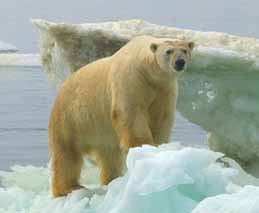
Object for study The original geoinformation system (GIS) "Populations of rodents and pikas of Russia and adjacent territories" was created. This system allows analysis of spatial patterns of allocation in separate species of these animals, zonal, sector and altitudinal changes of their communities, and also their influence on land tilling. With the help of the GIS, for the first time the map of rodent and pika populations (the scale of 1:15 mln) was prepared, which was accepted for publication in the National Atlas of Russia. A notion of "agrophilia" was introduced and it was established that agriculture within Russia facilitated prosperity of three - four species-agrophiles, but led to depletion of biodiversity at ecosystem level. By the example of Turan deserts, classification of rodent communities was created for natural and transformed arid ecosystems. The data obtained can be used under planning of nature-conservative measures and prevention of zoonosis nidus. A map of potential areal of plague (Yersinia pestis) was created within the range of the whole arid zone of Palearctics, and, for the first time, zoning and typological classification of natural focuses of diseases was carried out. It has been established that the broadening of the plague range under modern rates of global climatic changes is possible in various parts of the areal, but only on limited areas. 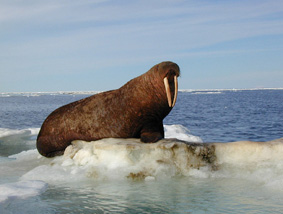
Object for study In arid ecosystems of Russia and adjacent countries, an important role is assigned to saigas, the number of which at present has lowered drastically until 5-10 % of the level of the beginning of 90s. By the method of DNA-analysis (RAPD-PCR), genetic isolation and low level of polymorphism of Mongolian population of saiga was revealed. For the first time it was shown that Kalmyk population differed from three Kazakhstan populations in haplotypes and took a special place in population structure of the species. The level of its genetic diversity constituted only 3.1%. Vital methods of studies were developed, including the test for females' saiga diagnostics of pregnancy based on estrogens content in their excrements. This test can be used for monitoring of reproductive status of females under their custody in captivity and in natural populations. The project for National strategy for saiga conservation was produced. The data about the level of genetic diversity of Mongolian dzeren were obtained. For the first time, the basic peculiarities of phylogeography for this species were presented and the broadening of the functioning and organization of the new Specially Protected Nature Territories in Tuva and Mountain Altai was suggested. 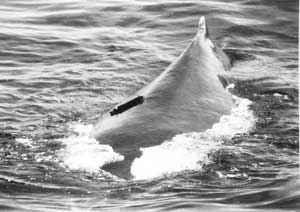
Object for study 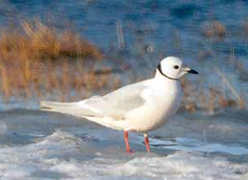
Object for study For priorities specification in nature-conservative activity and optimization of the net of biosphere reserves of Russia with the help of the programs MABFauna/MABFlora, the inventory was carried out and the databases on biodiversity were composed. Arealogical analysis of the species included into the Red Data Book of Russia was carried out, on the basis of which the focuses of endemism and territories with the greatest diversity of mammals, amphibians and reptiles were determined, and their representativeness on different in their status specially protected territories was estimated. In biosphere reserves, 43 alien invasive species of mammals were revealed. For the purpose of assurance of priority-driven nature-conservative activity and optimization of the net of biosphere reserves of Russia, revelation of the focuses of mammalian endemism and the territories with the greatest diversity of amphibians and reptiles was carried out. An electronic atlas of small-scale areals of all mammalian species of Russia was created for information-retrieval system (site of SIEE RAS www.sevin.ru/vertebrates/), which was used under preparation of the Red Data Book of the Russian Federation (volume "Animals", M., 2000). Original works on space monitoring have a special importance for the study of global climatic changes and their influence on the status of big mammals of Arctic area. The estimates for the areal, activity and mobility of the females of white bear were got for the first time in the Barents, Kara and Laptev Seas and the dependence of females' migrations on dynamics of ice cover and reproductive status was shown; the hypothesis validity about selective character of white bear females' use of different types of habitats changing depending on the seasons and reproductive status was proved. According to telemetry data, the localizations of generic and temporal dens, the data of bedding and going out of the dens were determined; the activity and directions of migrations of females together with calves after their going out of the dens were estimated. For the first time, long-term databases allowing analysis of different hypothesis about mechanisms of behavior and adaptation of the white bear to rapidly changing conditions of the Arctic area were created. The methods of estimation of the thickness and age of Arctic sea ice were developed with the help of neural networks. On the basis of created maps of the thickness it was shown that for the period of 1989-2005 a marginal, but stable lowering of ice cover thickness had taken place, which was caused by global warming. 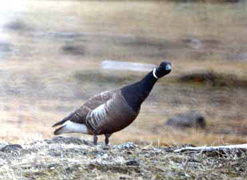
Object for study The databases on the dates of the beginning of the processes of sea ice thawing and formation and continuation of the periods of summer thawing were created according to measurements of brightness temperature SMMR/SSM/I and buoy net changes. On the basis of analysis of 27-year trends of the continuation of summer thawing periods, a clearly expressed tendency for enlargement of the continuation of ice cover thawing summer periods in Arctic Seas and Ocean was demonstrated. High correlation between results of ground-based observations of the moment of going out from the dens for the ringed seal in the Bering and Chuckchee Seas, and obtained by us estimations of the data of ice thaw beginning was got. The estimations of regional and inter-year variability in the continuance of thawing period of Arctic ice cover were carried out. The created numerical maps illustrate a shift of the ice cover thawing onset to the earlier dates and the change of vegetation phenology. 
Object for study Theoretical studies and numerous expedition works of the member of the Lab in different regions of the country allowed determination of the main principles of realization of regional monitoring, protection, use and reproduction of the objects of animal and plant world in European part of Russia, Western and Eastern Siberia and the Far East. Under the leadership or with the partnership of the fellows, regional cadastres of animal world and Red Data Books of some subjects of the Russian Federation are created and running. Coordination of scientific activity of the Reserves of Russia was fulfilled. The program for number of wintering birds monitoring in Russia and adjacent countries has been created and is maintaining. The results of long-term stationary works on the study, conservation and restoration of biodiversity of natural and transformed ecosystems on the Yenisei ecological transect serve as an admitted model of complex regional studies of biota. One of the priorities was the study of the experience of traditional nature management in the human populations of the Far North. The modern scientific bases of northern deer-raising were developed. The traditional and food needs of native low in number populations of Chukotka were validated for allotment of the 5-year quotas on gray and Greenland whales within the bounds of local fishery. |